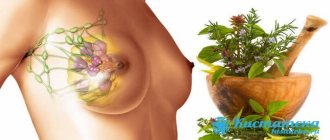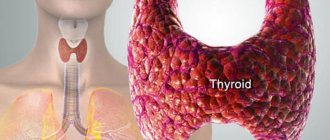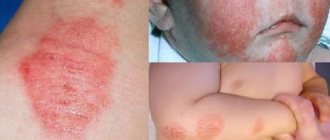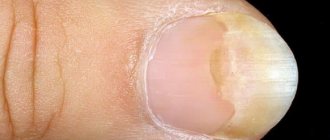Causes of bartholinitis
Bartholinitis is an inflammatory process affecting the large gland in the vestibule of the vagina.
Inflammation of the gland, called Bartholin's, is usually accompanied by suppuration, and its causative agents are infectious agents, such as gonococcus, staphylococcus, trichomonas, candida, chlamydia, ureaplasma, mycoplasma, E. coli, and viruses. The excretory duct and/or tissue of the Bartholin gland is affected by infection. Bartholin's glands are responsible for producing a secretion of mucous consistency. This is the substance that constantly moisturizes the vagina, thereby preventing its pathological dryness. The function of the Bartholin glands depends on hormonal levels. As is known, its changes due to menopause, after surgical interventions or in the event of an idiopathic failure lead to a stop in the production of mucus, resulting in vaginal dryness and noticeable discomfort both in everyday life and during sexual intercourse. During the premenstrual period, more mucus is produced, which is quite natural. With bartholinitis, impurities of pus are easily identified in the vaginal mucus.
Inflammation of the gland occurs when discharge from the vagina or urethra penetrates the external opening of the excretory duct of the gland, which subsequently spreads to the gland itself. The causes of bartholinitis , that is, the spread of infection to the Bartholin gland, are as follows:
- venereal diseases;
- promiscuous sexual intercourse;
- insufficient adherence to personal hygiene rules;
- weakening of general and/or local immunity - hypovitaminosis, stress, hypothermia, concomitant diseases;
- complications after surgical operations;
- pathological course of childbirth, abortion.
The disease is not characterized by a progressive course, but rather develops gradually. Its earliest stage is usually called canaliculitis, which implies inflammation of the excretory duct of the Bartholin gland. It is often a unilateral process with symptoms on the affected side. Canaliculitis manifests itself as redness of the opening of the excretory duct, located near the vestibule in the vagina on the labia minora, and slight mucopurulent discharge is observed. The skin of the labia minora near the opening of the excretory duct begins to be abnormally soft, and an enlarged excretory duct of the gland can be felt through it. The inflammatory cushion around the external opening of the excretory duct of the Bartholin gland, when subjected to pressure, is capable of releasing a drop of pus; it is advisable to subject it to bacteriological examination.
After a short time, bartholinitis itself occurs, that is, the gland tissues themselves are affected. The initial stage of swelling (formation of infiltrate) can also become the final stage, since the inflammatory process of this localization is prone to self-healing or spontaneous subsidence. However, this sometimes happens, and usually there is a further consequence of infection - blockage of the excretory duct of the Bartholin gland, the formation of a cyst or abscess containing pus inside. At this stage, self-healing is also possible, that is, the opening of the abscess, the release of pus, and as a result, the patient’s condition improves sharply - both the soreness of the labia and the high body temperature disappear.
Bartholinitis is accompanied by painful and extremely uncomfortable symptoms:
- tingling in the area of the labia minora;
- swelling of the labia minora or swelling of the affected gland, as a result of which the genital slit takes the shape of a crescent;
- local hyperemia;
- burning sensation;
- painful sensations during palpation, walking, sexual intercourse;
- fluctuation - the presence of liquid contents inside the gland;
- at the acute stage, the temperature rises sharply (up to 40°C);
- at the chronic stage, the condition is satisfactory, low-grade fever is possible;
- in severe cases, the inguinal lymph nodes become enlarged;
The localization of bartholinitis is divided into three stages:
- canaliculitis - damage to the excretory duct of the gland, but without blockage;
- true abscess - the primary process, inflammation of the gland and surrounding tissue; formation of a cavity limited by a membrane and filled with pus;
- false abscess - a secondary process, suppuration of an existing cyst;
Like any infectious disease, bartholinitis can acquire acute and chronic stages:
- the acute stage is manifested by throbbing pain on the side of inflammation, deterioration of the general condition, leukocytosis, the genital fissure takes on a crescent shape, fluctuation is determined, and enlargement of the inguinal lymph nodes is possible;
- the chronic stage is manifested by mild signs of inflammation, mild pain, compaction of the gland structure; Chronicity determines the likelihood of relapses and the formation of a Bartholin gland cyst.
Symptoms, causes, types and diagnosis of bartholinitis
Bartholinitis occurs as a result of inflammation of a large gland located in front of the vagina. The Bartholin gland produces a lubricant that provides moisture to the mucous membranes of the external organs. The disease can occur only after puberty. In children, this gland is underdeveloped.
The main symptoms of the disease include:
- purulent discharge in the external genital area;
- increased body temperature and chills;
- swelling in the labia majora area;
- increased size or asymmetry of the outer labia;
- pain, burning and discomfort during mechanical action, sexual intercourse or walking.
Depending on the course, bartholinitis is divided into forms:
- The acute form of the disease occurs at elevated body temperature and is characterized by severe symptoms;
- Chronic bartholinitis is characterized by spontaneous improvements and deteriorations of the condition. In this case, a blockage of the gland duct occurs and its compaction occurs. Therefore, a cyst forms in the gland, which can cause discomfort when walking or having sexual intercourse.
The main causes of the disease include:
- diseases of the genitourinary system;
- hypothermia;
- sexually transmitted diseases;
- bacterial vaginosis;
- wearing tight and synthetic underwear;
- decreased immunity;
- violation of personal hygiene standards.
The treatment and diagnosis of the disease is carried out by a gynecologist, who should be visited at the first signs of the disease.
Diagnosis of bartholinitis consists of several stages:
- Description of symptoms, medical history, as well as all previous gynecological diseases;
- Gynecological examination;
- Laboratory examination of a gynecological smear to detect pathogens;
- Laboratory blood test for sexually transmitted diseases;
- Complete blood test to detect signs of inflammation.
We recommend reading: Adnexitis symptoms and treatment in women, should you be afraid, what are the consequences + video consultation with a gynecologist
How to treat bartholinitis?
Treatment of bartholinitis is determined by its stage and phase of spread. An integrated approach and most often antibacterial therapy are used. If bartholinitis is accompanied by an underlying disease or complication, then they too are treated.
If a patient consults a doctor at the stage of canaliculitis, she will be shown:
- peace;
- applying cold to the affected area;
- treating the affected gland with disinfectant solutions;
- antibiotics, taking into account the sensitivity of the pathogen to them;
- antiviral agents, if the viral nature of the disease is established;
- physiotherapeutic procedures (UHF or ultraviolet radiation) on the affected area, no earlier than 3-4 days from the onset of the inflammatory process.
If a patient consults a doctor with an already formed abscess, she is shown:
- hospitalization in a specialized department;
- opening the cavity (capsule) of the abscess, drainage, installation of antiseptics;
- antibacterial therapy taking into account the sensitivity of the pathogen to it;
- desensitizing therapy;
- sedative therapy;
- analgesics to suppress pain;
- physiotherapeutic procedures at the end of the treatment period.
The chronic course of bartholinitis often involves the following components of the treatment process:
- thermal procedures of a non-medicinal nature - mud, ozokerite, paraffin, infrared laser;
- herbal medicine - sitz baths with chamomile, eucalyptus, calendula, sage, oak bark;
- surgical treatment of retention cysts with marsupialization;
- recovery period - applications to the wound, bandages with antiseptic solutions, irradiation of the wound area with a helium-neon laser, phonophoresis, UHF.
To prevent relapses, the patient will be shown immunomodulatory drugs.
Home treatment for bartholinitis
If you consult a doctor at the initial stage of bartholinitis, he will prescribe a treatment regimen that can be applied at home.
| General events | Drug effects | Folk recipes |
|
|
|
Articles on the topic
- Is it possible to cure bartholinitis without surgery at home?
- Treatment of bartholinitis at the initial stage - anbiotic regimens
- Causes of inflammation of the Bartholin gland - external and internal factors
Application of external agents
With bartholinitis, an important role is played by the use of external agents.
| Medicine | Action | Mode of application | Duration of treatment |
| Ice | Pain reliever, sedative | Several times a day, 30 minutes each | Until acute symptoms subside |
| Levomekol ointment | Anti-inflammatory | Applying a bandage at night | Until symptoms resolve |
| Liniment Vishnevsky | Healing | ||
| Chlorophyllipt solution | Antibacterial, antimicrobial | Every morning, evening |
Antibiotic therapy
The acute stage of bartholinitis requires the use of antibiotics. The doctor selects the means for treatment after conducting tests, identifying the causative agent of the infection, and its sensitivity to the drugs. Antibiotic therapy has features:
- The duration of treatment is prescribed taking into account the severity of the disease.
- Form of use: tablets, injections.
- The dosage is determined individually.
- Popular drugs are Ceftriaxone, Amoxiclav, Tsiprolet.
What diseases can it be associated with?
Bartholinitis is considered to be a disease that is in relationship with the following diseases; it can be both their cause and effect:
- vulvitis - inflammation of the external genitalia, which can spread to the glands;
- STIs - sexually transmitted diseases, being a source of infection, can provoke an inflammatory process in any organ of the reproductive system, including the Bartholin’s glands;
- Bartholin gland cyst is a complication of chronic bartholinitis, during a long course of which liquid exudate accumulates in the cavity of the gland;
- colpitis - inflammation of the vaginal mucosa of chemical, mechanical or infectious origin;
- urethritis - inflammation of the urethra.
Answers to frequently asked questions
What is Bartholin's gland?
The Bartholin gland is a paired female organ located in the thickness of the lower third of the labia majora. Their physiological function is the release of lubricant during sexual arousal and sexual contact.
What is a Bartholin gland cyst?
A Bartholin gland cyst is a voluminous liquid formation in the thickness of the labia, consisting of a dense capsule and containing a lubricant inside.
Why does a Bartholin gland cyst form?
It is formed when the ducts through which the lubricant escapes are closed (due to inflammation). At the same time, it accumulates inside, forming a cyst.
Why is a Bartholin gland cyst dangerous?
Firstly, it is a cosmetic defect (it can reach 10 cm in size or even more. At the same time, it prevents a woman from leading a full life, including a sexual one. Inside the cyst, the lubricant stagnates, these are excellent conditions for the growth of bacteria. Therefore, in most cases the cyst sooner or later festeres (an abscess forms), and this happens more often at the most inopportune moment (during pregnancy, on vacation, etc.)
Treatment of bartholinitis at home
Treatment of bartholinitis is possible at home, but in the early stages. If a patient consults a doctor with an already formed abscess of the Bartholin gland, she will most likely be indicated for hospitalization. In a medical hospital, the abscess is opened and drained, which is impossible at home.
If treatment is nevertheless carried out outside of constant medical supervision, at home, the patient is advised to carefully follow medical instructions, not to self-medicate, and to complete the prescribed course of treatment in full.
Treatment of bartholinitis in the majority of cases involves the use of antibacterial agents. Such therapy will be most effective if it is preceded by a microflora sensitivity test, and the prescribed course will not be subject to changes beyond the doctor’s recommendations.
At home, methods of traditional and folk medicine may be applicable; physiotherapy and some non-drug procedures may be a reason to visit the outpatient department.
Immunoregulators
During infectious diseases, taking antibiotics, analgesics and antipyretic drugs, the immune system weakens, and the natural, vital microflora of the body dies. Soon, candidiasis (thrush), disturbances in the digestive system (bloating, heaviness in the abdomen, constipation), general weakness, and poor sleep are discovered. Subsequently, intestinal dysbiosis, gastrointestinal diseases, frequent colds, and susceptibility to viral infections may occur. During the period of treatment at home for inflammation of the Bartholin gland and after (at least a month), it is necessary to take lactobacilli acidophilus and a vitamin complex.
Yogurt capsules contain four types of active cells of bacterial cultures that are part of the human intestinal microflora or are friendly.
- they restore the natural intestinal microflora, increasing the body's defense mechanisms. Reduce the possibility of developing infectious diseases;
- form an environment that inhibits pathogenic and putrefactive bacteria. Prevents the occurrence of thrush;
- normalize intestinal function, lowering its pH, eliminating heartburn;
- Without them, the synthesis (formation) of some vital substances is impossible.
Attention! The bacteria in the capsules are alive and in a “dormant” state. In warmth, they become more active and, not finding a nutrient medium for their life activity, quickly die. When you cut such a capsule, you can see a gray mass instead of white powder. These are dead bacteria that are absolutely useless for consumption. Therefore, packages with lactobacilli should be kept in the refrigerator, as they do in pharmacies.
A complex of vitamins and microelements is a powerful strengthening agent that restores the female body. For the medicinal treatment period, vitamins A, C, E are especially important. These are antioxidants.
- if they are deficient in the body, normal immune processes and full tissue restoration are impossible;
- they are involved in the protection and formation of cells;
- the result of their lack is prolonged illness and frequent relapses, susceptibility to infections.
Attention! Vitamins are taken before or with food, because their natural source for the body is food.
What drugs are used to treat bartholinitis?
to treat bartholinitis , depending on the characteristics of the course of the disease. They are prescribed strictly by a gynecologist.
Antibacterial therapy
- cephalosporins - Rocephin, Ceftriaxone, Cifran for a course of seven to ten days;
- Ofloxacin - orally 200-800 mg/day in two doses; course of treatment is 7-10 days;
- Azithromycin - once 1 g (4 capsules);
- Tetracycline - 0.2-0.25 g three times a day, washed down with water; the course of treatment lasts on average 5-7 days; after the symptoms of the disease disappear, the drug is continued to be taken for 1-3 days.
Desensitization therapy
- Diazolin - 0.05 g orally after meals 2 times a day;
- Diphenhydramine - 0.03-0.05 g 1-3 times a day, course of treatment 10-15 days;
- Claritin - 0.01 g orally, regardless of meals;
- Suprastin - 0.025 g 3-4 times a day;
Sedative therapy
- Valerian tincture - individual dosages depending on how you feel;
- Novopassit - individual dosages depending on how you feel;
- Phytoset - individual dosages depending on how you feel.
Painkillers
- Analgin - intramuscularly or intravenously for severe pain, 1-2 ml of a 50% solution 2-3 times a day;
- Spasmalgon - intramuscularly 2-5 ml 2-3 times a day.
Immunomodulatory agents
- Viferon - the dose is prescribed individually by the attending physician;
- Taktivin - the dose is prescribed individually by the attending physician;
- Timalin - the dose is prescribed individually by the attending physician.
Treatment of bartholinitis with traditional methods
Traditional medicine offers several recipes that are effective for bartholinitis, but their use does not mean self-medication. A woman with suspected bartholinitis should definitely contact a professional gynecologist, with whom she can discuss some herbal medicine methods. in particular:
sitz baths with decoction
- chamomile - 2 tbsp. Place the crushed raw materials in a thermos, pour ½ liter of boiling water, leave for 45 minutes, strain; pour the broth into a deep basin with warm boiled water, in which a sitz bath will be carried out (15-25 minutes);
- eucalyptus - 1.5 tbsp. Place the crushed raw materials in a thermos, pour ½ liter of boiling water, leave for 30 minutes, strain; pour the broth into a deep basin with warm boiled water, in which a sitz bath will be carried out (15-25 minutes);
- calendula - 2 tbsp. Place the crushed raw materials in an enamel bowl, pour ½ liter of boiling water, leave for 15 minutes in a water bath, leave for another 15 minutes, strain; pour the broth into a deep basin with warm boiled water, in which a sitz bath will be carried out (20-30 minutes);
- sage - 1.5 tbsp. Place the crushed raw materials in an enamel bowl, pour ½ liter of boiling water, leave in a water bath for 20 minutes, leave for another 30 minutes, strain; pour the broth into a deep basin with warm boiled water, in which a sitz bath will be carried out (10-15 minutes);
- oak bark - 2 tbsp. Place the crushed raw materials in a thermos, pour ½ liter of boiling water, leave for 30 minutes, strain; pour the broth into a deep basin with warm boiled water, in which a sitz bath will be carried out (15-25 minutes);
The following medications can be prepared for oral administration:
- combine ½ liter of honey, 150 grams of ground walnuts, 50 grams of boiled garlic, 25 grams of ground dill seeds; mix thoroughly, take 2 tbsp three times a day. a few hours after eating;
- combine ½ liter of honey, 200 grams of aloe leaves crushed in a blender, 2-3 tbsp. dry red wine; mix thoroughly, bring to a boil over low heat and simmer for an hour, cool; take 1 tbsp three times a day. 30-40 minutes before meals;
- combine in equal quantities agrimony, young pine tops, walnut leaves, meadowsweet, Icelandic moss, herb, sandy immortelle flowers; 2 tbsp. combine the mixture with 1 tsp. crushed valerian roots, pour ½ liter of boiling water, leave on low heat for 15 minutes under the lid, then remove from heat, and when cool, strain; take 1/3 cup 15 minutes after meals.
Popular recipes for external use
The most effective treatment for bartholinitis is to use external agents - baths, ointments, lotions and compresses. They can be prepared from various natural ingredients.
The use of external folk remedies in treatment is most effective when combined with antibacterial drugs.
Yarrow, nettle and blackberry leaves
To prepare lotions for the genitals, you will need to take a tablespoon of nettle, yarrow and blackberry leaves and pour 700 ml of boiling water. After 90 minutes, the broth must be filtered. Use the prepared infusion as a lotion on the genitals in the morning and before bed. To carry out the procedure, the decoction must be warm. It is recommended to prepare a fresh decoction daily.
Treatment with St. John's wort
One of the most effective means to combat bartholinitis is to use a decoction and ointment based on St. John's wort. To prepare the decoction, you will need to pour a tablespoon of dry St. John's wort into 0.5 liters of water and boil for 20 minutes.
To make the ointment, you will need 50 ml of goose or rabbit fat, 5 ml of beeswax and a tablespoon of crushed St. John's wort flowers. Mix the ingredients and heat until the fat is completely dissolved. The finished ointment should be stored in a cool place.
Treatment of bartholinitis with St. John's wort occurs in two stages: first, the external genital organs should be rinsed with a decoction of St. John's wort, and then an ointment based on it should be applied to the inflamed area.
Bath based on oak bark, chamomile and eucalyptus
An important stage in the treatment of bartholinitis is the daily use of baths based on medicinal herbs. To prepare an anti-inflammatory and wound-healing bath, you will need to take a tablespoon of eucalyptus, chamomile and oak bark and add a liter of water. Boil for 10 minutes.
The broth should be cooled until warm, and then make baths for the inflamed area. The exposure time is 15-20 minutes.
Compress with onions
The onion must be baked together with the peel in the oven. Then chop it up and wrap it in a bandage. Apply to the vaginal opening for 4-5 hours or overnight.
We recommend reading: Inflammation of the cervix and appendages in women: causes and treatment
Elena Malysheva will tell you more about inflammation of the Bartholin glands.
Cabbage compress
An effective folk remedy is treatment with cabbage leaves. You need to take a thick sheet and pour boiling water over it. Apply it to the inflamed area overnight. It is most effective to combine such treatment with the use of antibacterial therapy.
Treatment of bartholinitis during pregnancy
Bartholinitis during pregnancy is very likely, which is facilitated by a drop in general and local immunity, and hormonal changes in the female body. As part of prevention, a woman should monitor her intimate hygiene, avoid promiscuous sexual intercourse, which entails a risk of infection, and also regularly visit a gynecologist.
If bartholinitis does occur, then its treatment is necessary and often follows the same scheme as for non-pregnant patients. A set of measures is expected, combining antibacterial and analgesic therapy, treatment of inflamed areas, physiotherapeutic or non-drug procedures. Of all the various antibacterial drugs, the attending physician determines one that is sufficiently effective (based on bacterial culture results), but at the same time as safe as possible. If the possibility of taking antibiotics to treat bartholinitis is completely excluded, then sulfonamide drugs may be appropriate.
If a woman is diagnosed with a Bartholin gland cyst at the time of pregnancy, surgical removal is strongly recommended, which is much safer for the mother and fetus than the highly likely infection of the cyst during pregnancy. The operation involves local anesthesia, lasts a few minutes, is minimally invasive and prevents the problem of further use of antibiotics.
If bartholinitis and pregnancy are complicated by the presence of sexually transmitted diseases, the issue of maintaining or terminating the pregnancy will be decided individually, depending on the severity of the disease.
Which doctors should you contact if you have bartholinitis?
- Gynecologist
Diagnosis of batholinitis begins with collecting anamnesis and detailing the patient’s complaints. Then a comprehensive objective examination is carried out, that is, a gynecological examination using mirrors, colposcopy. To prescribe adequate therapy, a smear of vaginal discharge for flora is necessary - discharge is removed from the urethra, vagina, cervical canal, processed and stained using a special technique.
The cultural method involves growing the pathogen on a nutrient medium; usually the purulent contents of a ruptured abscess are subjected to such examination. PCR diagnostics allows you to identify the type of causative agent of bartholinitis. Sowing the secretions from the Bartholin's gland and/or vaginal secretions for microflora allows us to develop an antibiotic therapy regimen that suits the needs.
Additionally, a general blood test, a general urine test, and a blood test for RW and HIV are performed. If necessary, examinations for chlamydia, urea-plasma, mycoplasma, trichomonas, herpes infection, CMV, and gonococcus culture may be prescribed.
Treatment of other diseases starting with the letter - b
| Treatment of Graves' disease |
| Treatment of bacterial vaginosis |
| Treatment of balanoposthitis |
| Treatment of rabies |
| Treatment of biliary cirrhosis |
| Treatment of amyotrophic lateral sclerosis |
| Treatment of Alzheimer's disease |
| Treatment of ankylosing spondylitis |
| Treatment of Wilson-Konovalov disease |
| Treatment of Koenig's disease of the knee joint |
| Treatment of Crohn's disease |
| Lyme disease treatment |
| Treatment of Parkinson's disease |
| Treatment of Peyronie's disease |
| Treatment of Fabry disease |
| Treatment of warts |
| Treatment of botulism |
| Treatment of bronchial asthma |
| Treatment of bronchitis |
| Treatment of bronchiectasis |
| Treatment of brucellosis |
| Treatment of typhoid fever |
| Treatment of knee bursitis |
The information is for educational purposes only. Do not self-medicate; For all questions regarding the definition of the disease and methods of its treatment, consult your doctor. EUROLAB is not responsible for the consequences caused by the use of information posted on the portal.











